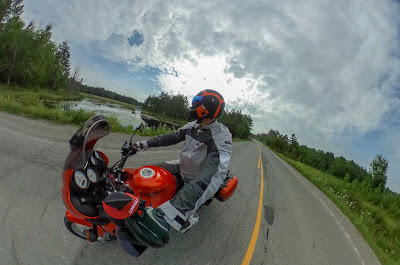I’ve written about owning your digital self in previous posts, but how that ownership happens is a function of how capable you are of authoring it. Developing that authorship requires freedom of choice, you can’t make full use of any medium if you don’t have cre ative control.
ative control.
I’m currently working toward my qualifications as a computer technology teacher, and this technical ability that allows for creative, deep use of technology is on my mind. The magic of being technically skilled is misunderstanding that I want to move past. Teaching technology means freeing up our access to it, and expecting anyone who wants to use it to be competent with it. 21st Century skills need to be as ubiquitous as literacy or numeracy skills.
When we are teaching writing, we don’t prescribe the type of writing tool or the type of paper. If a particular pen or type of paper encourages a student to write more, we’re overjoyed to use it. As soon as we can, we have students writing about their experiences using their own style of forming letters (within readability parameters). We encourage individualization of this complicated process in order to assist students in internalizing these complex skills; their ability to form letters is one of the most unique things they do as a person.
What we do with edtech is the equivalent of only showing students cards with words on them and then declaring them literate when they can string together a sentence of words. We don’t allow them to personalize their learning, and so make it impersonal, simplistic and ultimately forgettable.
A school computer is about as inflexible and impersonal as a computer can be made to be. If we’re going to recognize 21st Century learning as complex, inter-related skill sets that need to be nurtured and developed over time (like literacy itself), then we need to look at how we are presenting digital learning opportunities in education.
Our students currently teach themselves 21st Century skills outside education. When they come to school they meet panicky (usually older) teachers and administrators who fear the magic box of lights and discourage any use of them that aren’t understandable parallels of familiar analogue activities (word processing/type writer, powerpoint/slide show, etc). Activities that don’t have a pre-digital analogue are morally wrong / intellectually bankrupt / a waste of time… pick one and frown. Edtech is designed around this philosophy of belittling digital change, and ignoring the development of teaching in technology.
 |
appears every time we open up IE, which forgets
all your settings when you log out again.. #edtechfail |
If we want our students to be able to author their digital selves now and in the future, we MUST free up the technology and allow students to customize their digital experiences. The broken installation of Internet Explorer on my board computers (the only browser of choice) doesn’t cut it. Browser choice (complete with apps, mods and other personalization) makes all the difference in developing a skilled approach to accessing the internet. It should remember your customizations as well.
This flexibility needs to go deep into software. A student who has had access to multiple operating systems (Windows, OSx and Linux minimally) immediately has a better sense of how computers work because they are able to develop some perspective around how OSes make use of the hardware they are on, not to mention the software ecosystems each possess.
A truly agile edtech plan also breaks apart the hardware monotony found in every board. The minilab goes a long way toward addressing this while also addressing the software miasma. The only time in their lives they will ever be forced to use rows of identical desktops is in school (or a 20th Century factory). Preparing students for an IT environment that hasn’t existed for over a decade is positively backward looking
Educational technology is not about ease of administration for the board’s IT department, and it’s not about fear mongering about privacy that never existed, it’s about teaching students real, usable skills that will serve them in the future.
It would be nice if we started doing that.



























































